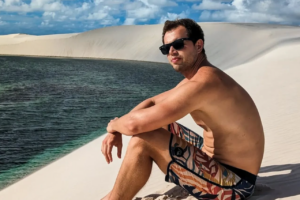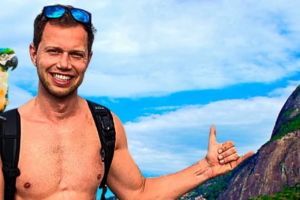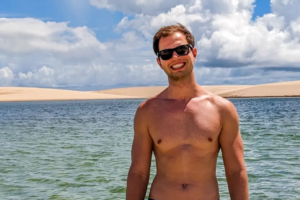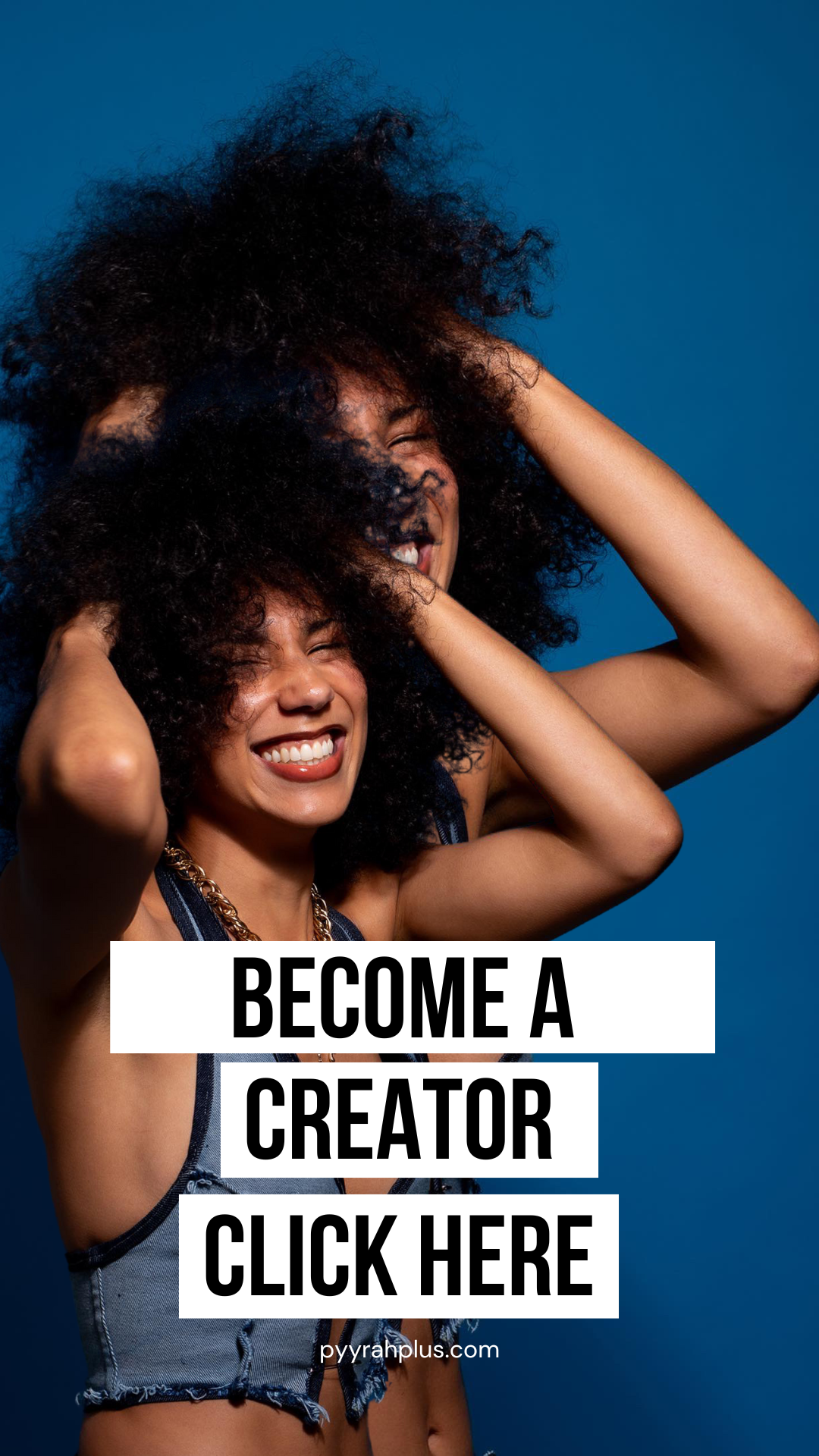The allure of the travel content creator lifestyle has become a siren song of the digital age. Scrolling through meticulously curated feeds of pristine beaches, hidden waterfalls, and sunrise yoga sessions atop ancient ruins, it’s easy to imagine a life of perpetual discovery and adventure. Yet beneath this carefully constructed facade lies a complex reality that few creators dare to acknowledge publicly.
Consider the scene: A tour guide announces “forty minutes” at a breathtaking natural wonder. While other travelers immediately immerse themselves in the experience, the content creator enters a familiar dance of preparation. Drone equipment emerges from a carefully packed bag, camera settings are adjusted, and the mental checklist of required shots begins to unfold. By the time the perfect angle is achieved and the lighting is just right, precious minutes have slipped away. The creator glances at their watch, mentally calculating how much time remains for actually experiencing the location they’ve traveled so far to visit.
This scenario, described by our subject who transitioned from casual travel videography in 2017 to full-time content creation by 2022, illustrates the fundamental paradox of professional travel content creation. The very act of documenting an experience can prevent one from truly living it. As they note, “If I’m focused more on my camera than enjoying them through the lens of my own eyes, how much do I really see them and experience them?”
The journey from enthusiast to professional reveals a transformation few anticipate. What begins as a passionate hobby—capturing memorable moments with friends, sharing genuine discoveries—evolves into a carefully orchestrated production. Each location becomes a film set, each experience a potential piece of content, and each moment an opportunity that cannot be wasted. The pressure to produce “beautiful” and “extraordinary” content transforms the natural flow of travel into a series of choreographed moments.
This transformation carries a physical burden as well. While modern technology has made equipment more compact, the reality of carrying professional-grade cameras, drones, and accessories through tropical climates and remote locations adds a layer of complexity to what might otherwise be simple, carefree exploration. The minimalist ethos of backpacking clashes with the demands of professional content creation, creating a constant tension between mobility and capability.

Perhaps most poignantly, our subject grapples with a question that cuts to the heart of modern digital creativity: “Do I visit these places for myself or for other people?” This query reflects a broader existential challenge facing content creators across platforms. The line between authentic experience and performative documentation becomes increasingly blurred as audiences grow and expectations mount.
The words “I want to live my life how it feels and not how it looks” emerge as a powerful reflection point. This sentiment encapsulates the growing awareness among creators that the pursuit of perfect content can come at the cost of genuine experience. It’s a realization that challenges the foundation of travel content creation itself, suggesting that perhaps the most valuable moments are those left uncaptured, existing only in memory rather than on memory cards.
This is not to diminish the value of travel content creation or the dedicated professionals who have mastered the art of balancing documentation with discovery. Rather, it serves as a crucial reminder that behind every perfectly framed shot and seamlessly edited video lies a complex negotiation between experiencing and capturing, between living and documenting, between being present and being productive.
As our subject concludes, the solution may lie not in abandoning content creation entirely, but in diversifying one’s creative expression and finding a sustainable balance. By acknowledging that human interests extend beyond a single niche and that authentic storytelling can encompass multiple passions—from education to creativity to self-development—creators can perhaps forge a path that honors both their artistic aspirations and their need for genuine experience.
The journey from casual observer to professional content creator rarely follows a linear path. Instead, it often unfolds like a photograph gradually coming into focus—each experience and decision adding clarity to the final image. Such was the case for our subject, whose transformation from travel content enthusiast to full-time creator spans half a decade of careful observation, experimentation, and eventual immersion in the digital nomad lifestyle.
The story begins, as many do in our digital age, with the simple act of consumption. For five years, our subject found themselves drawn into the carefully curated world of travel content—a virtual realm where every sunset is perfect, every adventure seamlessly captured, and every destination seems to hold unlimited potential. These images and stories served as more than mere entertainment; they became the foundation of a dream, the first brushstrokes of a future yet to be painted.
By 2017, that passive consumption transformed into active creation, albeit in its most organic form. Armed with nothing more than friendship and basic equipment, our subject began documenting trips with friends—moments of genuine joy and discovery captured without the weight of metrics or monetization. These early videos, free from the constraints of algorithmic optimization or audience expectations, represented something pure: the simple desire to preserve and share experiences.
This period of casual creation served as an unofficial apprenticeship in the craft of visual storytelling. Each trip offered new lessons in composition, timing, and narrative structure. The feedback loop was intimate and immediate—friends’ reactions providing genuine insight into what resonated and what fell flat. These early experiments laid the groundwork for what would eventually become a more structured pursuit.
The launch of a dedicated YouTube channel in early 2022 marked a significant shift in approach and ambition. The focus narrowed to a specific location—the creator’s home base—transforming familiar surroundings into content worthy of global attention. This phase brought with it new challenges: the need to see the familiar through fresh eyes, to transform daily experiences into compelling narratives, and to maintain consistency in both output and quality.
The decision to transition to full-time travel content creation, beginning with an ambitious journey to Brazil, represented more than a change in location—it was a fundamental shift in identity. This pivot required not just physical relocation but a complete reorientation of purpose and perspective. Every moment became potential content, every location a possible set, every interaction a potential story arc.
Yet this evolution, while appearing smooth in retrospect, carried with it subtle complexities often overlooked in the standard digital nomad narrative. The shift from creating content about one’s home to becoming a professional wanderer introduced new pressures: the need to constantly discover and document the extraordinary, the challenge of maintaining authenticity while meeting content demands, and the delicate balance between experiencing a moment and capturing it.
The creator’s journey mirrors broader trends in digital media consumption and creation, where the line between personal passion and professional pursuit grows increasingly blurred. What begins as genuine enthusiasm often evolves into something more complex—a transformation that brings both opportunities and challenges. This evolution from passive viewer to active creator, from casual documentarian to professional storyteller, reveals much about how modern digital careers develop and the various phases of growth required to establish oneself in the competitive landscape of travel content creation.

As the industry continues to evolve, with new platforms emerging and audience expectations shifting, the path from enthusiast to professional becomes increasingly nuanced. The success of creators like our subject lies not just in their ability to capture beautiful moments, but in their capacity to adapt and grow while maintaining the authentic spark that inspired their initial foray into content creation.
“Forty minutes,” announces the tour guide at a breathtaking waterfall, and thus begins a familiar choreography that few outside the content creation world truly understand. While ordinary travelers reach for their swimsuits, the professional creator initiates a complex mental calculation—a sophisticated dance of priorities that will define the next precious moments.
This seemingly simple scenario, shared by our subject, illuminates the intricate reality of professional travel content creation. Those forty minutes transform into a high-stakes puzzle: how to capture drone footage of the cascading waters, frame the perfect ground-level shots, document the surrounding environment, and still find time to actually experience the location’s natural splendor. The result often feels like watching a spectacular play from backstage—technically present, yet removed from the pure, unmediated experience.
The physical demands of this lifestyle present an equally compelling narrative. Picture, if you will, navigating the humid labyrinth of a tropical rainforest. While fellow travelers move freely with light daypacks, the content creator shoulders a different reality: a carefully packed array of cameras, drones, stabilizers, and backup batteries. Modern technology, despite its increasing miniaturization, still amounts to a considerable burden when combined. Each piece of equipment represents not just weight, but responsibility—thousands of dollars of sensitive electronics requiring protection from humidity, heat, and the occasional unexpected rainfall.
This reality creates a striking paradox within the minimalist travel ethos that many creators aspire to embrace. The very tools required to document the freedom of lightweight, spontaneous travel often prevent its achievement. Every accommodation choice must account for secure storage. Every transit decision must consider equipment protection. Even the simple act of exploring a new city becomes a careful calculation of what gear to bring and what to leave behind.
Time management emerges as perhaps the most demanding aspect of this profession. The forty-minute scenario repeats itself in various forms: sunset shots requiring arrival hours before the actual event, “spontaneous” market scenes that demand multiple takes, and peaceful morning sequences filmed in the harsh light of midday due to scheduling constraints. The creator must constantly balance their artistic vision with practical limitations, all while maintaining the illusion of effortless wanderlust for their audience.
Consider the morning routine of capturing a “perfect sunrise moment” at a popular destination. While the final video might show a serene scene of solitary contemplation, the reality often involves arriving in pre-dawn darkness, setting up equipment in challenging conditions, and sharing limited space with dozens of other creators seeking the same shot. The resulting content may be beautiful, but it represents hours of preparation, multiple attempts, and careful editing to create the appearance of effortless discovery.
This duality between appearance and reality extends to the very nature of travel itself. Spontaneous detours—often the soul of memorable travel experiences—become logistical challenges when every moment needs to be documented. The simple joy of discovering a hidden local café transforms into a mental checklist: lighting conditions, background noise levels, permission to film, and the ever-present question of whether this moment will resonate with an audience.
Yet within these constraints, dedicated creators find ways to innovate and adapt. Some develop sophisticated workflows that maximize efficiency, while others embrace the constraints as creative challenges. The most successful often learn to strike a delicate balance between capturing content and preserving the authentic experience of travel—though this equilibrium remains as elusive as it is essential.
The reality behind the lens reveals a profession that demands far more than technical expertise or an eye for beauty. It requires the stamina of an athlete, the organization skills of a project manager, and the adaptability of a seasoned traveler. While the polished final product may suggest effortless adventure, the truth speaks to a far more complex and demanding reality—one that shapes not just the content being created, but the very experience of travel itself.
In the quiet moments between uploads, when cameras are finally powered down and screens grow dark, travel content creators often find themselves confronting a profound question: “Do I visit these places for myself or for other people?” This seemingly simple inquiry, raised by our subject, opens a window into the complex psychological landscape of professional content creation—a world where the boundaries between authentic experience and curated performance become increasingly blurred.
The motivation behind content creation rarely remains static. What often begins as a genuine desire to share discoveries and experiences—an intrinsic reward driven by pure creative enthusiasm—gradually transforms under the weight of metrics, expectations, and algorithmic demands. The shift can be subtle, almost imperceptible at first: an extra take to perfect a sunset shot, a carefully planned outfit to complement a location’s color palette, a slight adjustment to one’s natural reaction to make it more “camera-friendly.”
This evolution introduces a peculiar psychological phenomenon: the “beautiful places” content loop. Creators find themselves caught in an endless cycle of seeking increasingly spectacular locations, not necessarily for their inherent value or personal interest, but for their potential to generate engaging content. The process becomes mechanical—visit, capture, edit, share, repeat—with each iteration demanding more visual appeal than the last. As our subject notes, this repetitive cycle can transform even the most extraordinary experiences into something that feels “very boring,” a startling admission that speaks to the psychological toll of turning wonder into work.
The challenge of maintaining authenticity while planning content presents its own psychological complexities. Modern content creation demands meticulous preparation—researching locations, timing visits for optimal lighting, choreographing movements for the camera. Yet this very preparation can feel at odds with the spontaneous, genuine experiences that initially drew many to travel. The creator becomes both participant and director, simultaneously trying to live in the moment while orchestrating its capture. This duality creates a unique form of cognitive dissonance, where the pursuit of authenticity itself becomes a carefully planned performance.
Perhaps the most profound psychological impact comes from what our subject describes as being “completely out of the present moment.” The human brain, despite its remarkable capabilities, struggles to fully engage with both direct experience and documentation simultaneously. When viewing the world through a viewfinder or screen, creators often find themselves processing experiences not as lived moments but as potential content—evaluating angles, considering transitions, planning edits. This constant meta-awareness creates a psychological barrier between the creator and the very experiences they aim to capture.
The weight of this digital mediation becomes particularly apparent in moments of natural beauty or cultural significance. Standing before a magnificent waterfall or witnessing a traditional ceremony, the creator’s mind often splits between appreciation and documentation. This division of attention not only diminishes the immediate experience but can lead to a deeper sense of disconnection—a feeling that life is happening at one remove, always filtered through the lens of content creation.

This psychological burden manifests in subtle ways: the anxiety of missing a perfect shot, the pressure to maintain a consistent posting schedule, the nagging feeling that every moment not captured is a moment wasted. Over time, these stresses can accumulate, leading to what might be termed “creator’s paradox”—the more one focuses on documenting life’s beautiful moments, the less one feels truly present in them.
Yet within this challenge lies an opportunity for growth and self-awareness. The very act of recognizing these psychological impacts, as our subject has done, represents the first step toward finding a more sustainable approach to content creation. The question evolves from “How do I capture everything?” to “How do I maintain my authentic connection to experience while sharing it with others?”
The journey toward resolving this tension often requires creators to develop new psychological frameworks—ways of thinking about their work that honor both the desire to share and the need for genuine experience. Some find balance through designated “camera-free” moments, others through more intentional selection of what to document. The key lies not in choosing between living and documenting, but in finding ways to do both that preserve both the creator’s psychological well-being and the authenticity of their content.
The evolution of a digital creator’s journey often mirrors the natural world’s adaptation principles—survival depends not on maintaining rigid patterns but on thoughtful transformation. This truth emerges clearly in our subject’s pivot from pure travel content to a more nuanced, multifaceted approach to digital storytelling. Their experience illuminates a broader shift in the content creation landscape, where authenticity and diversity increasingly trump narrow specialization.
“We are not just one niche,” our subject observes, challenging the conventional wisdom that success in digital media requires unwavering focus on a single topic. This insight speaks to a fundamental truth about both creators and their audiences: human curiosity refuses to be confined to a single channel of expression. The future of content creation appears to lie not in deeper specialization but in thoughtful expansion—a evolution that honors the complex tapestry of human interests and experiences.
This transition from pure travel content to a more diverse creative palette represents more than a simple pivot; it embodies a sophisticated response to the limitations of single-theme content creation. Where once the pressure to maintain a consistent travel narrative might have forced creators to manufacture content from increasingly similar experiences, this evolved approach opens new avenues for authentic expression. Education, creativity, and self-development emerge not as departures from travel content but as natural extensions of the journey—both literal and metaphorical.
Consider the integration of educational content into travel narratives. Rather than simply showcasing a destination’s surface beauty, creators can now delve deeper into its historical context, cultural significance, or environmental challenges. This approach transforms what might have been a simple visual diary into a rich tapestry of learning opportunities. A visit to an ancient temple becomes not just an aesthetic experience but a gateway to understanding architectural history, religious traditions, or preservation techniques.
The emphasis on value-added content represents a particularly significant evolution in the digital creation space. This shift acknowledges a maturing audience that seeks not just entertainment but enrichment. As our subject notes, creators like Yes Theory and Aiden Robbins have successfully demonstrated how travel content can serve as a vehicle for deeper storytelling, weaving together personal narrative, cultural insight, and practical information into compelling content that serves multiple purposes.
This evolution demands a more sophisticated approach to content planning and creation. Where once a creator might have relied solely on capturing beautiful vistas, they now must research historical context, interview local experts, and craft narratives that bridge entertainment and education. This additional preparation, while demanding, results in content that holds greater value for both creator and audience—content that remains relevant long after the initial wanderlust has faded.
The challenge, of course, lies in maintaining authenticity while meeting audience expectations. The modern content creator must navigate between their evolving creative instincts and the algorithmic demands of digital platforms. Success in this space requires developing what might be called a “creative compass”—an internal guidance system that helps navigate between personal truth and public appeal.
Looking forward, the future of digital content creation appears to favor those who can master this delicate balance. The most successful creators will likely be those who view their platforms not as constraints but as canvases for expressing the full spectrum of human experience and learning. This might mean producing a travel video that seamlessly incorporates lessons about local economics, or a destination guide that doubles as a meditation on personal growth.
This evolution suggests a future where content creators function less as specialists and more as renaissance individuals, capable of drawing connections between diverse fields of knowledge and experience. The goal shifts from simply documenting experiences to creating content that adds genuine value to the viewer’s life—whether through education, inspiration, or thoughtful entertainment.
The journey from pure travel content to a more holistic approach to digital creation represents not just a personal evolution but a blueprint for sustainable success in the content creation space. It suggests that the future belongs not to those who can capture the most spectacular views, but to those who can weave those views into narratives that inform, inspire, and illuminate the complex connections that make up our modern world.
In an era where the phrase “content creator” has become as ubiquitous as the sunrise shots that fill our social media feeds, this creator’s journey offers a rare glimpse behind the carefully curated veil of travel content creation. Their experience serves not as a cautionary tale, but as a nuanced meditation on the evolving relationship between documentation and lived experience in our digital age.
The revelation that “I want to live my life how it feels and not how it looks” emerges as more than a personal epiphany—it represents a shifting paradigm in digital content creation. This sentiment echoes beyond the realm of travel content, touching upon fundamental questions about authenticity, purpose, and the true value of shared experiences in an increasingly connected world.
What becomes clear through this creator’s journey is the necessity of evolving beyond the traditional models of travel content creation. The future lies not in abandoning documentation entirely, but in finding more sustainable, authentic ways to capture and share experiences. This might mean fewer perfectly framed drone shots and more honest discussions about the challenges and complexities of travel. It could involve moving away from the constant pressure to produce and toward a more thoughtful, curated approach to content creation.
The physical and psychological demands revealed through this narrative—from carrying equipment through tropical climates to the constant mental calculations of content optimization—highlight the often-invisible labor behind seemingly effortless content. This transparency serves an essential purpose: it helps recalibrate expectations for both creators and audiences, fostering a more realistic understanding of what sustainable content creation actually entails.
For aspiring creators, these insights offer valuable guidance. Success in this space may no longer be measured solely by the perfect composition or the most exotic location, but by the ability to maintain authenticity while adding genuine value to the viewer’s experience. The integration of educational elements, cultural context, and personal growth narratives suggests a more sustainable path forward—one that serves both creator and audience in more meaningful ways.
The evolution from pure travel content to a more diverse creative palette represents not a retreat from specialization, but an advancement toward more authentic expression. This shift acknowledges the multifaceted nature of human experience and the limitations of constraining oneself to a single narrative thread. As our subject notes, “We are not just one niche”—a simple yet profound observation that challenges prevailing wisdom about content creation strategy.
Perhaps most significantly, this journey illuminates the possibility of finding balance between capturing moments and living them. The future of travel content creation may lie not in choosing between these extremes, but in developing new approaches that honor both the desire to share and the need to experience. This might mean being more selective about what to document, more intentional about how to capture it, and more honest about the realities behind the perfect frame.
As we look to the future of digital content creation, the lessons drawn from this narrative suggest a more nuanced, sustainable approach to sharing our experiences with the world. The goal shifts from creating perfect content to creating meaningful content—work that not only inspires travel but encourages thoughtful engagement with the places and cultures we encounter.
In the end, this creator’s journey serves as both a mirror and a window—reflecting the current state of content creation while offering a glimpse into its potential future. It reminds us that in the pursuit of capturing beautiful moments, we need not sacrifice the beauty of experiencing them. This balance, though challenging to achieve, may well be the key to creating content that truly enriches both creator and audience alike.


